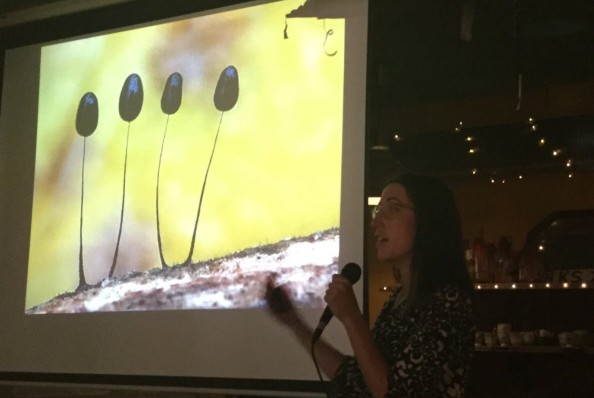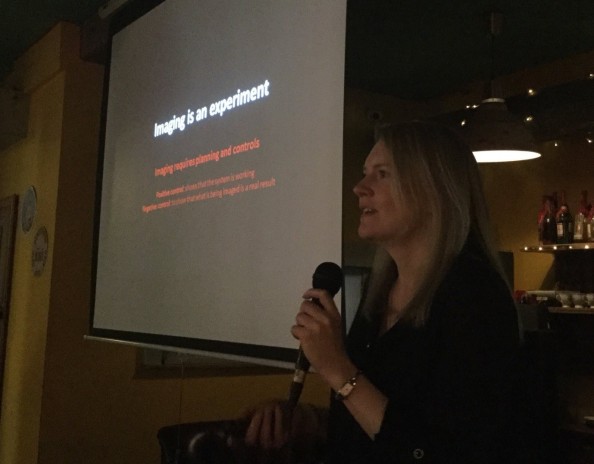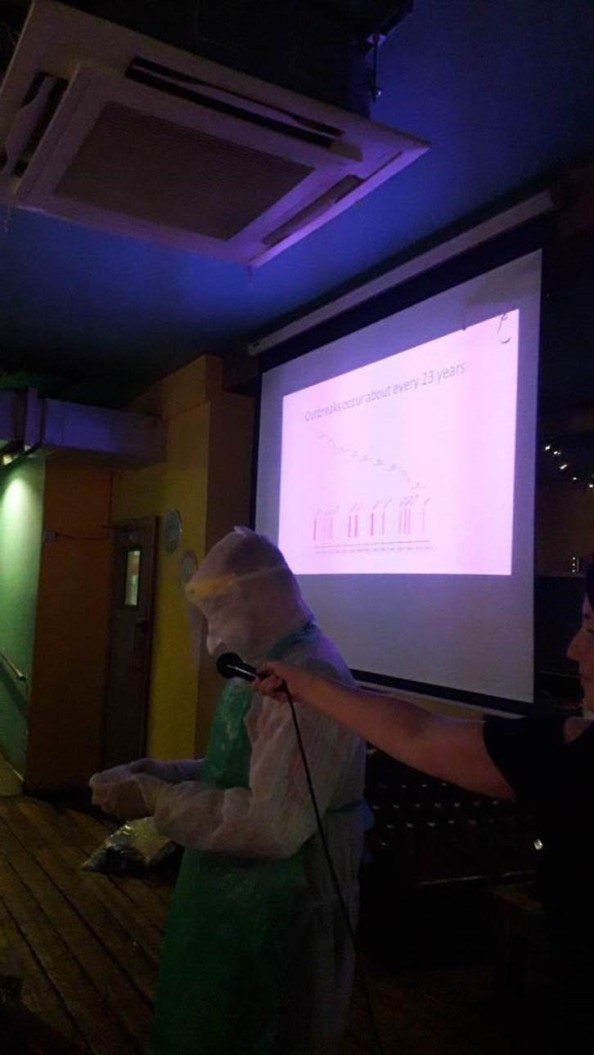‘Meet The Scientists’ celebrates the inter-disciplinary and collaborative approach that the IIB takes in conducting their research activities. The annual event showcases a selection of projects being undertaken across departments, and transforms complex subjects into interactive and engaging tasks for children. More than 1000 children and their parents from across Liverpool attended the event at World Museum on Saturday 27th April.
“As a vet, and PhD student examining Histoplasmosis at the human-animal interface, my interests in infectious disease and global health, influenced the subject of my stand. Different disease scenarios based on IIB research activities were presented to my audience. Children then decided which team of scientists, clinicians and community members were needed to stop the spread of disease (in the more engaging form of a puzzle). This activity highlighted the importance of inter-disciplinary teamwork to obtain a complete picture of infectious disease transmission dynamics, and the impacts of disease on affected communities worldwide. Children were particularly engaged when understanding their role in the global health picture, as students and as the future generation of scientists.
This was a fantastic opportunity for public engagement with an energetic and enthusiastic audience! Thank you to the organisers of this event and for the scientists who gave me permission to showcase their research.”
Tessa Cornell (Functional and Comparative Genomics)
“Despite being incredibly messy, making hundreds of pine cone bird feeders with the families was a lot of fun! At ‘Making a Home for Nature’, families could create bird feeders, bee houses and do some colouring. They could also take home various handouts, for other wildlife-friendly activities or to tick off which birds come to their feeders. I really enjoyed talking to lots of different people, ranging from young children to grandparents. I hope many have continued to enjoy the activity through watching the wildlife attracted to their gardens and the things they made.”
Emma Cartledge (Mammalian Behaviour & Evolution Group)

“It was so much fun to interact with children with all that enthusiasm and curiosity about learning and getting involved in what we did! They have all got very creative while making their viruses by putting a smiley face and a couple of googly eyes to make them less harmful than they are. At the end of the day, they brought their creation of a happy virus home with a little more awareness on what viruses are and what they may cause into.”
Dilem Shakir (Biochemistry)
“What a day! It was raining buckets outside and this seemed to drive a sheer endless stream of visitors to our ‘Skull Detective’ stand at the Liverpool World Museum, which felt a bit like Noah’s ark at times and kept me and volunteer helpers Kelly Ross and Dan busy for hours on end, with hardly time to catch our breath. Our hope was to inspire the current and next generation among the public to understand the needs of, and ultimately help preserve, the local wildlife around us in a friendly and fun environment. So it was encouraging and satisfying to experience the great curiosity and enthusiasm of children and adults alike about some of the wonders of the animal world. Our display of tracks and remains of common mammalian wildlife in Britain was greatly enhanced by exhibits provided by the friendly staff of the World Museum, including an enormous lower jaw of a juvenile sperm whale that attracted great attention. So would we do it again? I think so!”
Michael Berenbrink (Evolution, Ecology and Behaviour)

“It was a great experience participating in this year’s Meet the Scientist event. I enjoyed engaging with children about how bacteria can become superbugs by acquiring antimicrobial resistance genes from the environment. It was really rewarding to see how engaged both the children and their parents were to learn about the rising problem of antimicrobial resistant due to over use of antibiotics.”
Rebecca Bengtsson (Functional and Comparative Genomics)
We had a fantastic day at the museum. As always, it was great to see so many enthusiastic young people and their families enjoying science! The ball pit ‘discovery tank’ was hugely popular with young and old and really helped explain the challenges of drug discovery! It was challenging seeing so many people and explaining the concept properly, but I think everyone enjoyed it! A great team effort on a very busy Saturday!
Hannah Davies, James Torpey, Alana Maerivoet (Biochemistry)
Thanks also to Laura Winters for organising the event and undergraduate and visiting students for their help on the day.



























